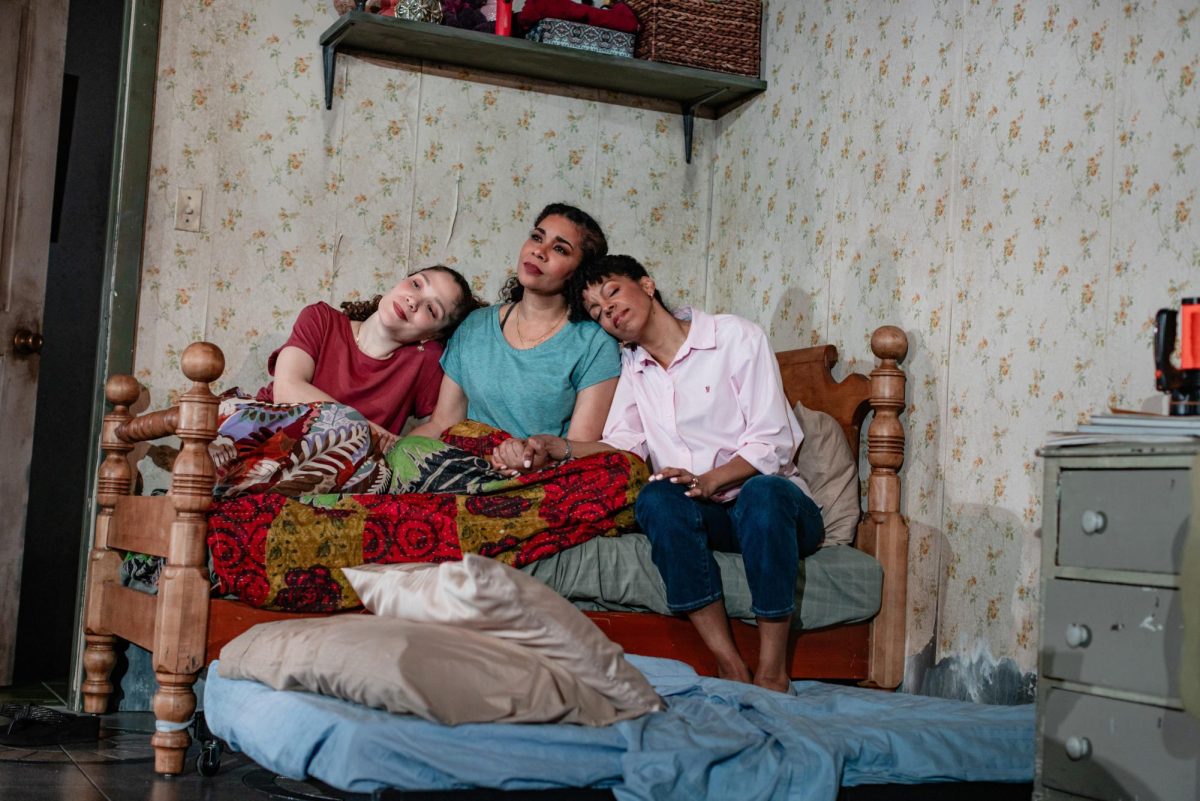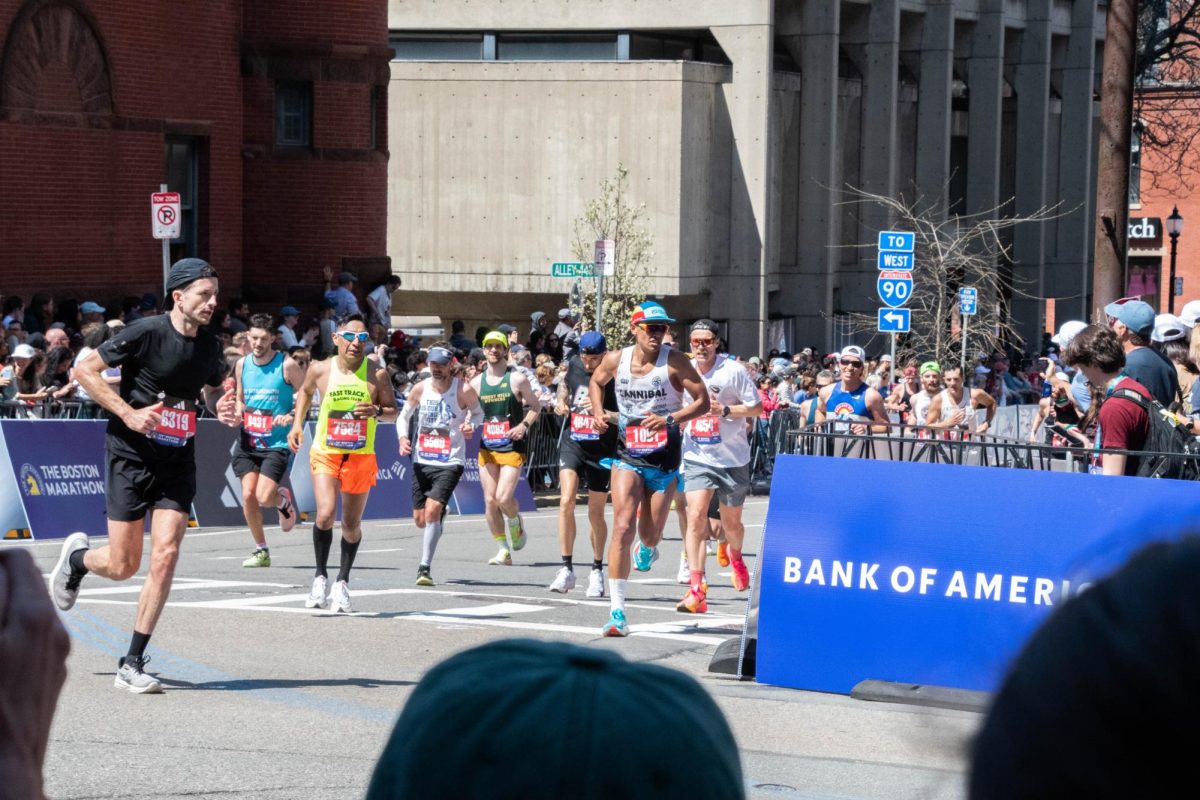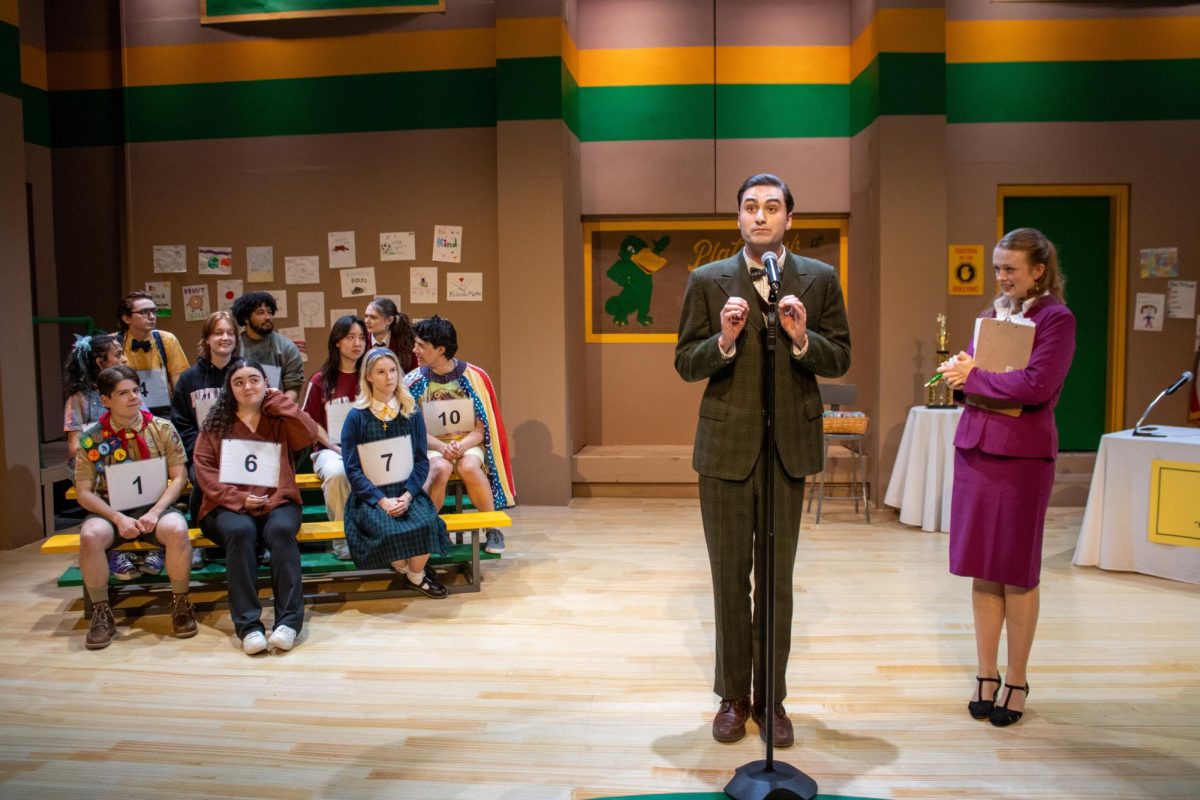By Rebecca Sirull, Inside Editor
“If we burn, then you burn with us.” Jennifer Lawrence’s words echo through the theater, sending chills down the spines of eager “Hunger Games” fans gathered to watch the latest installment in the series. This film is the first half of the on-screen interpretation of Suzanne Collins’ novel “Mockingjay,” the third in the “Hunger Games” trilogy. The series tells the story of a dystopian future in which children must fight to the death in an annual tournament called the Hunger Games, designed to maintain the control of an oppressive government.
The film picks up where “Catching Fire” (2013) left off, with Katniss Everdeen (Jennifer Lawrence) escaping from the Hunger Games arena after displaying a show of rebellion against the government. She flees to the fabled District 13, where refugees from the government’s oppressive power have been in hiding for years.
The movie represents a departure from the role we have grown accustomed to for Lawrence. Rather than the usual strong, empowered woman, we see Everdeen’s fall from grace and struggle to recover from the trauma of the games, while simultaneously adjusting to a new environment in District 13. She is surrounded once again by the same people she grew up with: her mother (Paula Malcomson), sister Prim (Willow Shields) and best friend Gale Hawthorne (Liam Hemsworth), but so much has changed since they were last together; it almost makes the reunion more painful.
There is almost no dialogue between Everdeen and Hawthorne, a disappointing screenplay choice for viewers who were excited to see the renewed dynamic between the two following their long separation. However, the lack of words almost says more than anything else. There is a clear distance between them, which becomes even more pronounced by the few words they do exchange, in which they express opposing ideologies. While Hawthorne has grown loyal to District 13 and the cause of the revolution, Everdeen remains hesitant and skeptical, still focused on the friends she left behind in the arena.
One of the main plot points of the film is the exploitation of Everdeen as a symbol of the revolution. She is forced to star in a series of propaganda videos encouraging other districts to join the rebellion, even though she herself is not fully committed to the cause. It is somewhat disenchanting to watch her once-fiery spirit quelled, replaced by a submissive puppet who is taken advantage of by those who claim to have her best interests in mind, as she suffers from post-traumatic stress disorder.
While the overwhelming emphasis on propaganda gets a bit old by the end of the film, a spectacular performance by the late Philip Seymour Hoffman makes strides towards redeeming it. As the leader of District 13’s right-hand man Plutarch Heavensbee, Hoffman manages to draw in both humor and respect as he shamelessly manipulates Everdeen to cultivate the perfect publicity stunt.
He understands the necessity to tap into Everdeen’s natural emotions and place her in settings where she is comfortable in order to create a more natural-looking piece. Although he is nevertheless using her for his own gain, he does so with such expert finesse that the audience can’t help but admire him.
Despite its shortcomings, “Mockingjay: Part 1” still had its moments of pure emotion, like Everdeen’s reaction upon returning to the devastated remains of her hometown and Mellark’s hollow stare from his place of captivity behind a television camera. These spots of tenderness in the otherwise stoic, martial atmosphere of District 13 remind us why we fell in love with the series in the first place.
While the film diverges from the action-packed, fast pacing of the first two movies, it delves deeper into the world of Panem and gives fans a closer look into the psyches of its lead characters. Most viewers walked away satisfied and eager for the saga to continue in the final installment.
Photo courtesy Murray Close, Lionsgate Publicity









